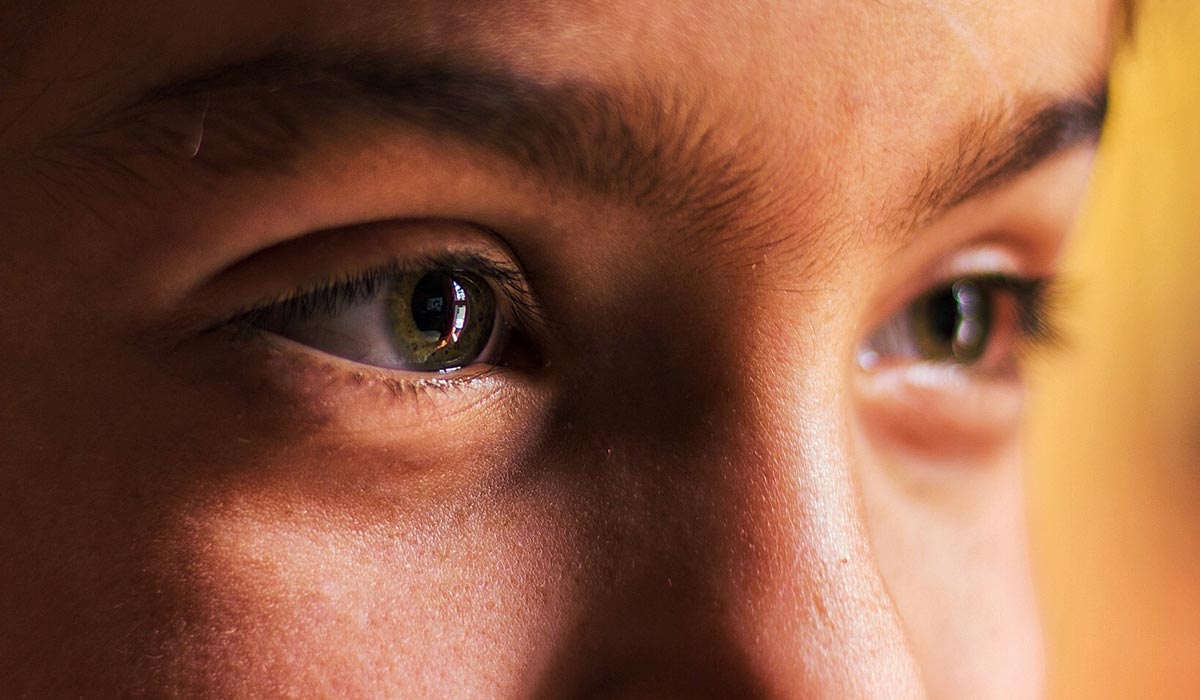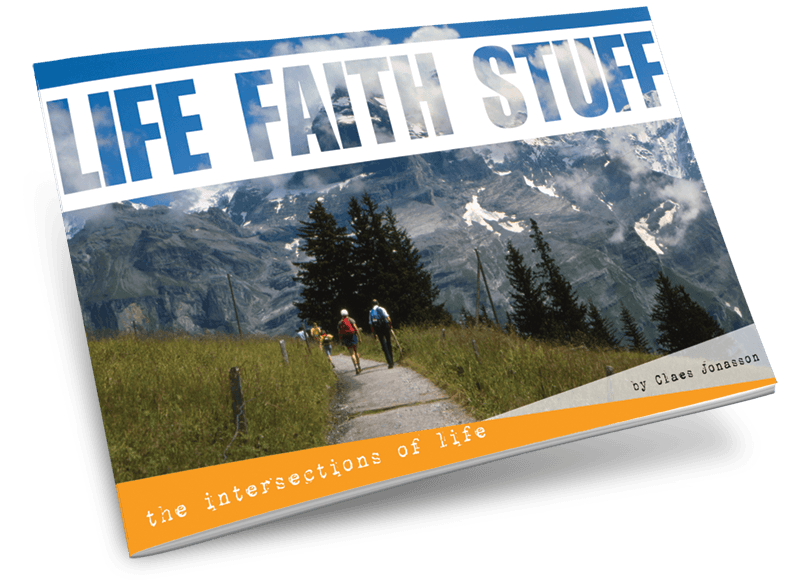Seeing vs. perceiving — how we interact with the world
Seeing is believing, so the old saying goes. And who would argue with that?
Perceiving is one of those old-fashioned words that sometimes gets picked up and used by those who are “in”, while at other times only the odd artists and other people into aesthetics use it.
Seeing, a scientist will tell us, is a physical-chemical chain of reactions that our brain performs routinely. The light hitting our eyes turns into nerve messages our brains can decode into meaningful information about our surroundings — in color and stereo, no less.
Perceiving has to do with perception and involves analyzing information, categorizing it, comparing it with previously received information and making sense of it, interpreting it within our larger context. Media and communication experts deal in perception. Right now a favorite term for at least part of this concept is “optics”. But we’re not here to talk politics so let’s move on.
Perceiving includes the process of seeing and goes on to cover an interpretation of the message content, eventually spurring action. Sometimes it’s the desired action, sometimes not. In any case, it’s a response, a sign that the viewer has actually received the message.
Seeing is an ongoing process. We keep our eyes open for about 2/3 of our lifetimes. The average life expectancy in the US is around 78 years. 2/3 of that is 456,000 hours. That’s a lot of seeing and a massive amount of information passing into our brains through those open eyes.
Most of it is forgotten rather quickly, which is just as well. How would we store and categorize that much information in a meaningful way? Much of the time, our eyes function like a security camera. We see our surroundings, take appropriate action and forget what we just saw. Because it has no long-term relevance.
In that function, our eyes do a great job. They keep us from bumping into things and getting hurt. Like other people on a sidewalk or other cars when we’re driving down the freeway. We walk to work, to school, we drive around town or across the country, all without hitting anything. Our eyes have fulfilled their function as sentinels.
However, once at our destination, we promptly fail to remember much of what the streets looked like today. Were there many cars? How did the sun shine on the fields?
When I took driver’s ed, the instructor loved to ask, about 30 seconds after passing a road sign of some kind: “What did that sign say?” Truth be told, I really didn’t know. As I saw it, I decoded it, adjusted my driving if required and moved on. So half the time, I truly didn’t any longer know what the sign back there had said.
My brain works that way simply because it wasn’t told to do anything but seeing in the first place and accordingly didn’t store any deeper information.
On the other hand, perceiving a beautiful day means more than just realizing that a raincoat will not be needed today. It’s noticing the sun reflected in windowpanes, the luster of old paint when hit by bright light, the deep blue, endless sky. It’s noticing all that and being acutely aware of its existence, to react to the day and the sight. In one sense, it doesn’t ultimately matter if the reaction is positive or negative, as the reaction itself is the main thing. Reacting is part of truly perceiving.
A zombie defined is a person who is under a heavy, trance-like influence, walking and acting like a living dead. Zombies are usually associated with witchcraft movies set in Caribbean locales or in post-apocalyptic stories.
But there are plenty of zombies walking or even driving around New York City, Chicago or even Little Rock, Arkansas. Their trance is in seeing and not perceiving. They see the world around them. The details. The beauty. The trash. But there’s no response — no perception. For all they care, there might as well be absolutely nothing around them.
The business of life to them consists of getting by, preferably with the least amount of effort. Do your job. Eat and sleep. Pass the 24 hours of the day. We’ve created any number of activities for people to just make time go by, without arousing them to any semblance of effort (beyond the occasional complaining about how things are). Movies, TV shows, 24 hour radio channels and magazines aiming for the lowest common denominator as their sacred guideline.
Within their content is nothing terribly offending (as long as you’re in the target demographic), but also nothing that stimulates deep thinking or activity that aspires to change the status quo.
Instead of living our lives, with our own problems, we watch people on TV and in movies live for us. We entrust our problems to a call-in show or the advice column in a glossy magazine, or some chat group online. With a phone call or tweet, an instant solution is provided and accepted as the pronouncement of an oracle.
Perceiving, that is going through life with open eyes, will not take away any problems. In fact, a perceptive person is likely to find more of them, since he or she does not close their eyes to what’s going on around them.
That said, many of our problems and questions are answered readily enough by us opening our eyes and using information already available around us to find solutions. That action does bring knowledge of good and bad, of how other people act, react and finally how we ourselves interact with them.
Our old friends, Dr. Watson and Sherlock Holmes, illustrate the difference between seeing and perceiving quite well. There’s no doubt that Dr. Watson is very able to see everything around him. He’s a doctor and has been trained to observe.
But it’s Sherlock who perceives the minute details and draws astounding conclusions from them. The kind that once you hear them explained, you’re likely to smack your forehead and go, but of course! Why didn’t I think of that?!
Thing is, you or I don’t. Because we are busy seeing, like Dr. Watson. Looking at everything around. To be sure noticing many of those same details. Certainly not stumbling and bumping into things. Even drawing conclusions about some things and making decisions from that. That’s seeing.
But it’s Sherlock who perceives what each item signifies and goes deeper looking for meaning. In that process he combines his vast knowledge with the new information and voila, he has a clue, an answer, a result.
I’m not saying that we have to become versions Sherlock Holmes. That might get really annoying after a little while.
But there’s value in going beyond just seeing and moving into perceiving what and who is around us. We become more engaged in life, in relationships. We are more “there”.
We build more memories when we truly perceive the world around us. The kind of memories we can recall in vivid Technicolor to our mind’s eye many decades later. Because they imprinted in our mind so strongly.
In the movie Elizabethtown, the quirky Claire goes around putting her hands up as if taking a picture with an imaginary camera whenever there’s something she really wants to commit to memory. It’s her act of perceiving, as well as building memories. The two go hand in hand. Claire may be quirky, but she’s on to something: We decide to be perceiving or just seeing.
Often we’re more inclined to put on our perception glasses when in a new location. Just because it’s all new. But we can also choose to actively perceive the goings-on in our regular daily life. It’s the difference between being on mental autopilot and actively choosing to be engaged with what’s going on around us.
It’s life lived at a deeper, more connected level where we are lean into activities and conversations and don’t just bide time until the next thing.
Summer is around the corner. A great time to fully open our eyes to perceive the world around us, to engage and be part of life.
Reflection
What would it be like, if you as an experiment decided to go through a regular day perceiving instead of just seeing? Try it and see what it feels like. How does that make you feel? How about the people around you?
Never miss out!
Get an email update every time I publish new content.
Be the first to know!



